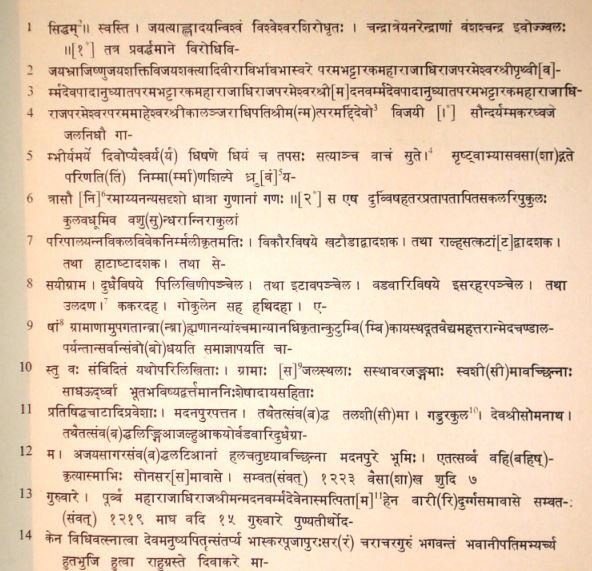|
INSCRIPTIONS OF THE CHANDELLAS OF JEJAKABHUKTI
SĒMRĀ COPPER-PLATE GRANT OF PARAMARDIDĒVA
TEXT1
[Metres : Verses l, 3-5 Anushṭubh ; v. 2 Śārdūlavikrīḍita ; v. 6 Śālinī ; and v. 7 Mālinī ].
First Plate

_____________________
1 From impressions. Subsequently I have compared the reading from the original plates, placed at my
disposal by the Director of the Provincial museum at Lucknow, to whom my thanks are due.
2 Expressed by a symbol.
3 The bracketed akshara is redundant. It seems to have been cut while copying the draft of a grant
of Madanavarman and was not struck off even after t was known to be superfluous.
4 This punctuation mark, as many others below, is joined to the following letter so as to appear as
a mātrā.
5 Originally the sign of visarga, which was subsequently altered.
6 The consonant of this akshara appears as m.
7 This punctuation mark is quite close to the letter that follows, which may also be read as kē.
8 Cartellieri (denoted as C, below) read these two aksharas as patha by similarity of forms, but it is not
suitable here. He also divided the previous portion of the text as  ; but I hesitate
to agree with him as the name ; but I hesitate
to agree with him as the name  is rather too long. is rather too long.
9 The horizontal stroke of this letter is missing, and consequently, it appears as rā. 10 This word is not known to me.
11 The horizontal stroke of the bracketed akshara was not cut.
|